The Return of Marvel’s Ultimate Comics Line and Why It Matters
Ultimate Marvel comics are back! Here's a look back at the history of the line and why it's perfect time to start collecting these issues.
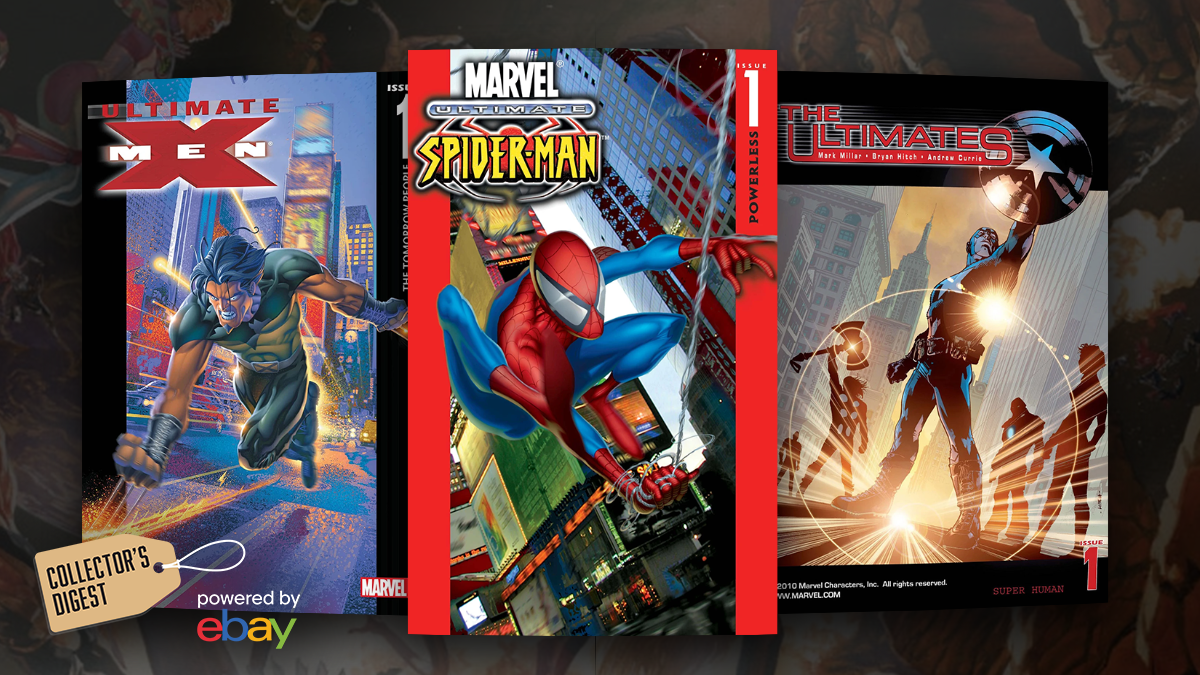
This article is part of Collector’s Digest, an editorial series powered by: 
Twenty five years ago, Marvel Comics was in a difficult spot. They were crawling out of Chapter 11 bankruptcy. They were coming out of one of the lowest creative points in the company’s history, and the early ‘90s comics boom had gone completely bust with very little sign of recovering. It wasn’t a good time to make superhero movies either, especially after the commercial ridicule thrown at Batman & Robin. So to try and fix things, Marvel tried something old again.
With the goal of getting back to “the world outside your window” that made the company a cultural juggernaut, Marvel stripped out 30 years of accumulated continuity and started fresh with brand new updates of their most popular characters. First came Ultimate Spider-Man, from Spidey vet Mark Bagley and hot indie superstar Brian Michael Bendis. Ultimate X-Men followed hot on its heels, with Ultimates (an updated Avengers book) shortly thereafter. And Marvel took off again. Suddenly Marvel books were everywhere; movies were actually looking good; eventually, Iron Man stole from Ultimates and cast Samuel L. Jackson as Nick Fury. It worked so well that, from its humble groundwork in the year 2000, the seeds of the Ultimate Universe grew Marvel into the backbone of American pop culture for over a decade.
But while Marvel dominated pop culture outside comics, inside them, the Ultimate line that spawned Marvel’s cultural dominance fell apart — first at the hands of vapid, empty-calorie edginess; then by the mainstream Marvel Universe cannibalizing what made the Ultimate Universe special; and finally, by being smashed together with the mainstream universe in arguably Marvel’s best crossover of all time.
And now it’s back, resurrected by its destroyer, Jonathan Hickman, and pumping out blazingly hot collectors’ items that are also fascinating updates on classic themes. Is it worth jumping into these books now, as a collector or as a reader? What’s hot from what came before? Is it worth grabbing any of these old books?
THE ORIGINAL ULTIMATE UNIVERSE
The Ultimate Universe launched lean, but they went big. Ultimate Spider-Man took what Stan Lee and Steve Ditko did in a half an issue and stretched it out over an entire arc, waiting almost 5 issues to get Peter into the costume. It wasn’t until the following year that the next book in the line hit – Ultimate X-Men from Mark Millar and Adam Kubert, based heavily on the Fox movie that had just released in theaters. And then in 2002, Ultimates #1 dropped, from Millar and artist Bryan Hitch, ushering in what some argue is the Widescreen Age of comics.
There were three main innovations here that led to the commercial success of the Ultimate Line. The books were all to varying degrees cinematic: Ultimate Spider-Man was talky, like if Glengarry Glen Ross was populated by teenagers, with a distinct movie-like patter, while Ultimate X-Men and Ultimates were built around big splash pages, huge fights, and “realistic” costuming updated for a post-9/11 universe.
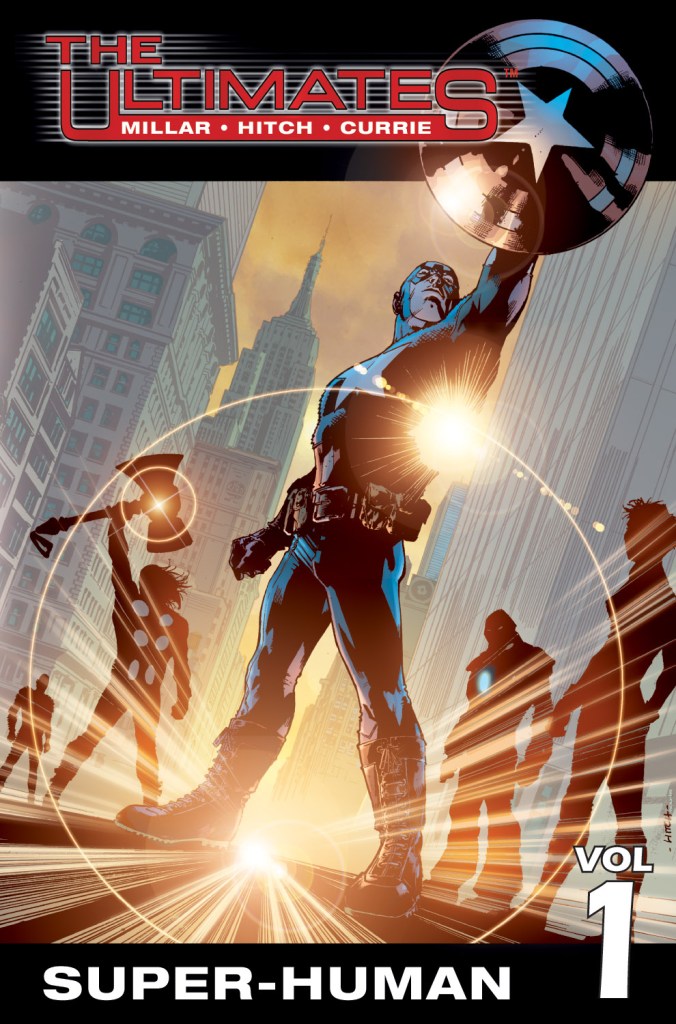
They were also printed into oblivion. Variant covers were a marketing gimmick many argued bore some responsibility for the comic market crash of the ‘90s, so they were used very sparingly at the dawn of this era, but these books saw very high print runs and were often sold in non-traditional settings, like big box stores or even (weirdly enough) Payless Shoes, a budget national shoe chain.
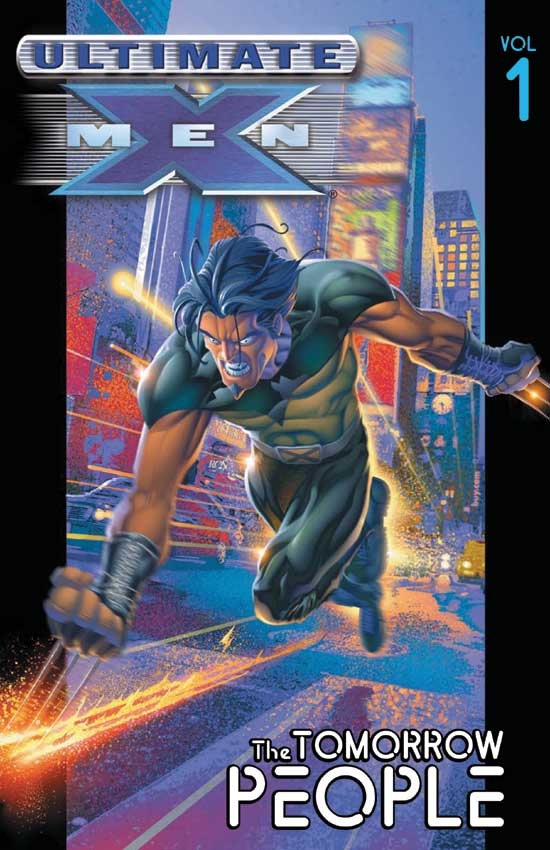
And finally they were crafted with the book market in mind. Collected editions of comics from the ‘80s and ‘90s used to be an extreme rarity, reserved for only groundbreaking works like Watchmen or massively popular stories like the Dark Phoenix Saga. Here, the books were specifically written with future collected editions in mind – Ultimate Spider-Man’s slow burn origin might have crawled as a monthly comic, but as a 120 page collected edition sold after the sixth issue released, it really zipped along.
The latter two factors play a huge role in pricing of back issues today. Early issues of Ultimate Spider-Man have hung onto a lot of their value because of the craft involved, and because of their importance in the broader Marvel multiverse, but Ultimates and Ultimate X-Men are for the most part available for at or near their 2001 cover prices on the secondary market. There are just too many copies available out there right now for them to rise precipitously. And as we’ll see, the story for the X-Men in particular diverges so much from the traditional X-story that it’s extremely unlikely we’ll see any bump from the new generation.

COMICS TO COLLECT: Ultimate Spider-Man 1, Ultimate X-Men 1, Ultimates #1
THE ULTIMATE LINE FALTERS
Eventually Bendis and Bagley would set a record for most consecutive issues on one series by the same creative team, crossing the 100 issue mark straight out of the gate. But Ultimate Spider-Man aside, the Ultimate Universe quickly gained a reputation for pointless edginess.
Millar and artist Greg Land actually introduced the Marvel Zombies in Ultimate Fantastic Four #21 and 22, making those issues some of the most highly sought after from the entire initial Ultimate run. But from there, Ultimate characters just…kept eating people.
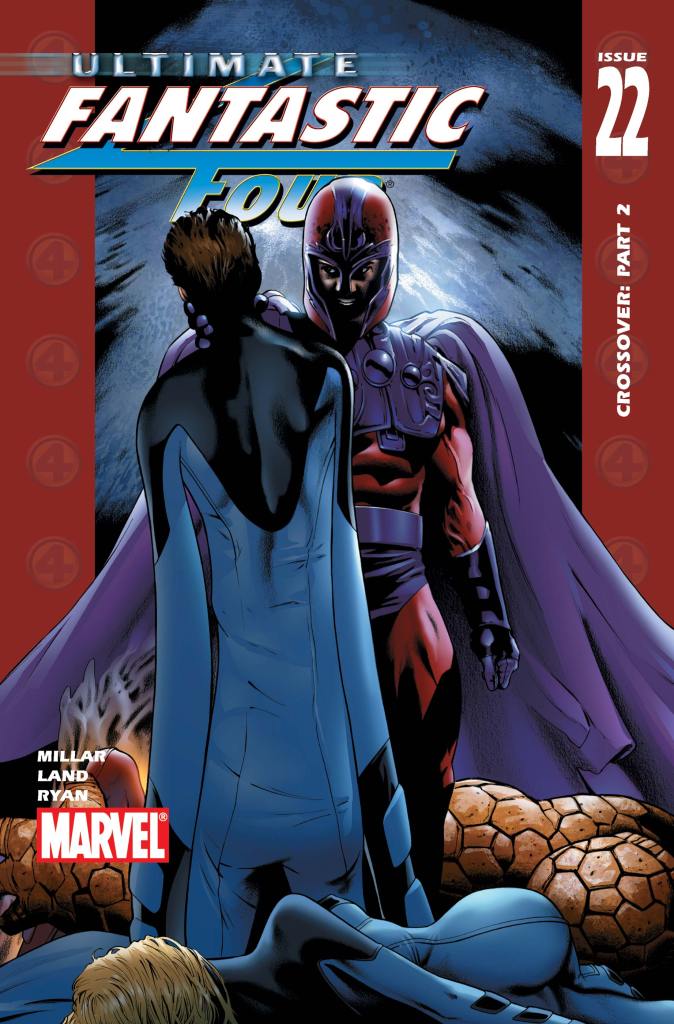
Ultimates, Ultimate X-Men, and Ultimate Fantastic Four all spiraled away from the world outside your window concept quickly, and flagging sales led to a crossover in 2008 titled Ultimatum. This series introduced variant covers to the Ultimate Universe at scale, and saw Magneto using Mjolnir to flood most of the world, killing millions including a number of named heroes (in one of the most notorious scenes, the Blob literally eats the Wasp). It is justifiably reviled and functionally worthless as a collector’s item.
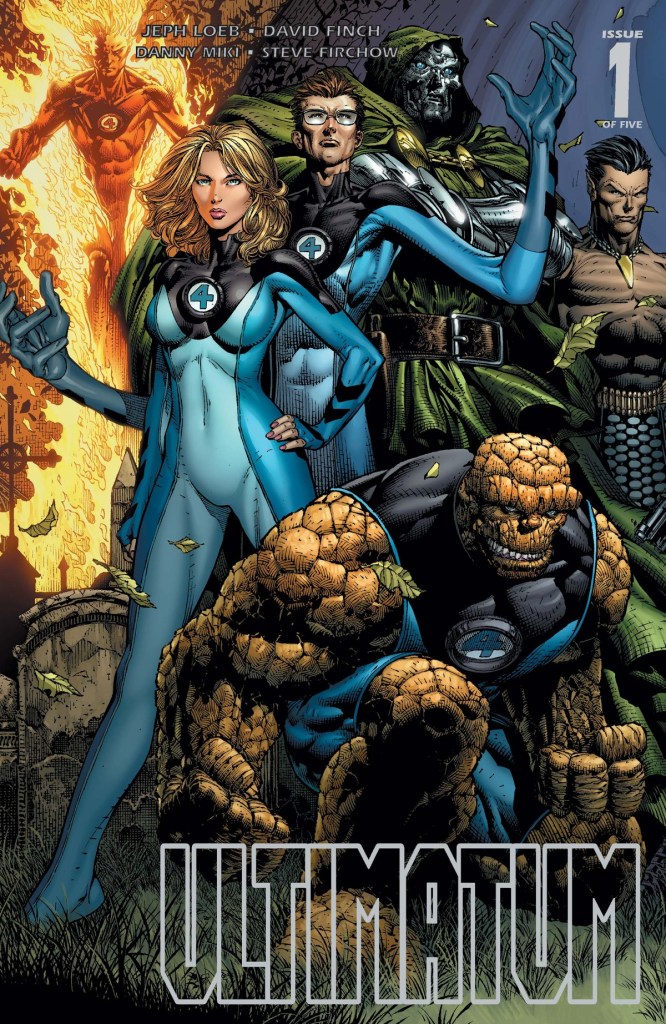
It did, however, lead to the creation of Miles Morales. Ultimate Fallout #4, the issue introducing Miles to the world, is one of the most valuable comics from the modern era, with ungraded copies selling for as much as $500 and 9.8 copies going for three times that. However, Miles was also the harbinger of the fall of the Ultimate U, as his popularity was so great it led to the last wall distinguishing his home universe from the regular Marvel Universe collapsing – 2012’s first crossover between Earth 616 and 1610, Spider-Men. Bendis’ writing was still emotionally evocative and effective, but once the hard “no crossovers” rule fell, it was only a matter of time before the Ultimate U was no more.
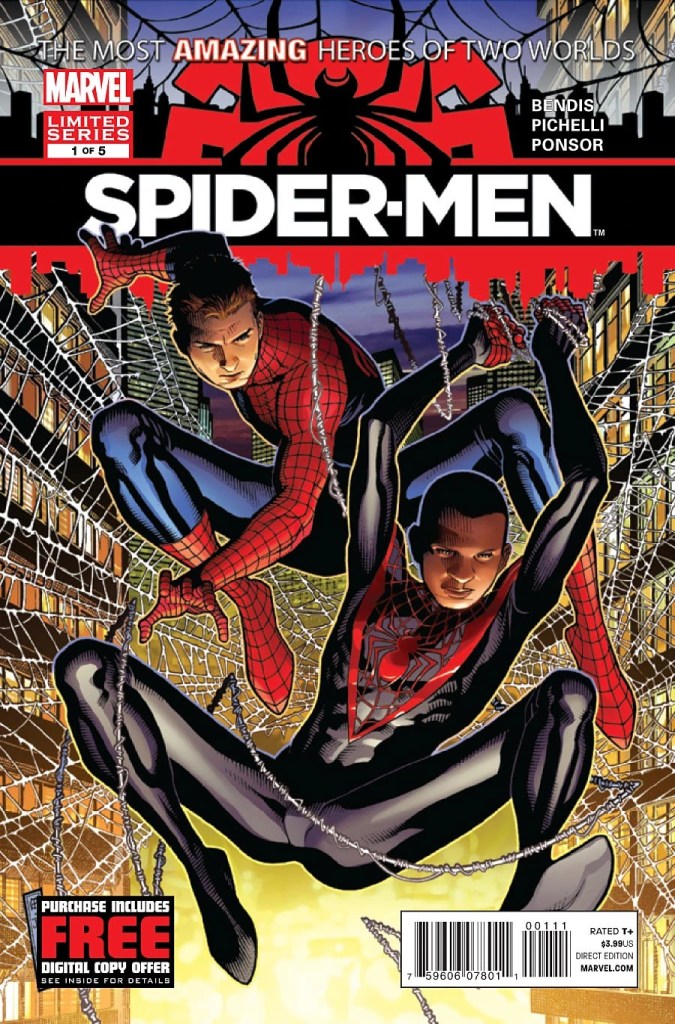
While the relaunch of the Ultimate Universe hasn’t had a noticeable effect on prices of this generation of comics, that may be because Ultimate Fallout #4 is so valuable that it’s hard to see character-based fluctuations. In addition to being the first appearance of Miles, Ultimate Fallout #4 is also the first appearance of The Maker.
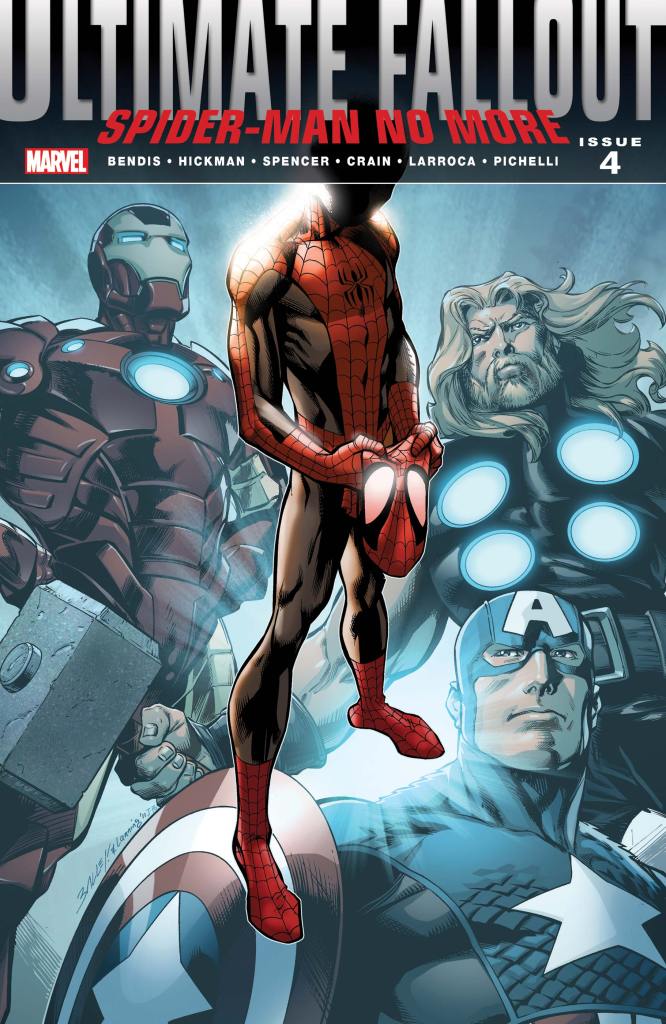
Ultimate Reed Richards followed a vaguely similar hero trajectory through Ultimatum, but driven to despair by how terrible that series was, he took a heel turn and a new name and became the main antagonist of the final phase of the Ultimate Universe, and his villainy led to him surviving its collapse, causing trouble in the main Marvel Universe, and eventually trying to recreate an “improved” version of his home in the Ultimate Universe we’re seeing now.
COMICS TO COLLECT: Ultimate Fantastic Four #22, Ultimatum #1, Ultimate Fallout #4, Spider-Men #1
THE DEATH OF THE ULTIMATE UNIVERSE
In 2016, Jonathan Hickman and Esad Ribic destroyed the Marvel Multiverse. The last two Earths to fall were Earth 616 and Earth 1610 in a grand battle between The Maker’s Children of Tomorrow and the heroes of the mainstream Marvel Universe, while both Reeds Richards scrambled to find a way to survive, the multiverse ended in a flash of light at the close of Secret Wars #1.
There’s no way to know what the MCU is thinking down the road, but it’s entirely possible this is going to be the foundation of the movie adaptation of Avengers: Secret Wars. If it is, expect a massive jump in value for single issues from the original series. Regardless of what the movies do, though, Secret Wars is arguably the greatest superhero comic crossover of all time. It should be bought and read until it falls apart and it’s reasonable to expect lots of people to do just that. There is a ton of value to be had with this series just on its quality alone.
Insert: Secret Wars #1
THE RETURN
Only a handful of characters made it out of the Ultimate Universe alive: Miles Morales, his close family and friends, and The Maker. And seven years after destroying it all (and after a pair of go-nowhere teases in the pages of Miles’ new 616 book Miles Morales: Spider-Man #10 and Al Ewing’s metaversal Avengers Ultimates2 #100), Jonathan Hickman came back to The Maker and had him finish his initial job: to create an Ultimate universe he could control, using his knowledge of the heroes of Earth 616 to prevent their ascent and closely manage a world he now ruled.
In the pages of Ultimate Invasion, he created a world with very few heroes who are not invested in rigid, generationally cycling kabuki conflicts, with Colossus and Magik ruling Russia; Silver Samurai and the Hand in charge of east Asia; Sunspot’s father controlling South America; a Captain Britain ruling Europe; representatives of Bast the Panther God and Khonshu the Egyptian Moon God controlling north Africa; and Obadiah Stane and Howard Stark controlling North America. From there, a young Tony Stark, his dying father, and a Reed Richards from another universe trapped in Dr. Doom armor work to free the world of The Maker’s control.
These books are probably priced higher than they’ll stay long term, but so far they’re very high quality, and Hickman, Bryan Edward Hill, and Peach Momoko are all solid creators. Momoko in particular has sold her X-Men: Demon Days crossover like gangbusters, so the value here might not be a flash in the pan. From a collecting standpoint, it’s probably worth pre-ordering whatever you can and then monitoring the back issues for price drops. From a craft standpoint, jump on them as soon as you can. This sure seems like the start of a fun ride.
COMICS TO COLLECT: Miles Morales Spider-Man #10, Ultimates2 #100, Ultimate Invasion #1, Ultimate Spider-Man #1, Ultimate Black Panther #1, Ultimate X-Men #1
